– Ah. Well, welcome, everyone, to Wednesday Nite @ the Lab. My name is Carol McCartney and I’m the Outreach Manager at Wisconsin Geological and Natural History Survey, which is part of UW-Extension Cooperative Extension. On behalf of the Biotech Center, UW-Extension Cooperative Extension, Wisconsin Public Television, the Wisconsin Alumni Association, UW-Madison Science Alliance, and standing in for the vacationing Tom Zinnen, I thank you for coming out tonight to Wednesday Nite @ the Lab. We do this every Wednesday night, 50 times a year. Tonight it is my great pleasure to introduce you to my colleagues at the Wisconsin Geological and Natural History Survey, Grace Graham and Sue Swanson. Grace has been a geologist at the survey since 2014, primarily working on inventorying and monitoring springs in Wisconsin. She has visited hundreds of springs around the state. Her work has focused on describing the physical and hydrological characteristics of springs, but she has growing interest in studying their ecological functions as well. Grace was born in Ohio. She graduated from Cleveland Heights High School and received a bachelor’s degree in environmental geology from Beloit College, her connection, perhaps, to Sue Swanson.
Dr. Sue Swanson is a professor of geology and Weeks Chair in the physical and human geography at Beloit College. She was born in Illinois, where she graduated from Crystal Lake High School. She attended Gustavus Adolphus College in Minnesota after which she was in the US Peace Corps in Lesotho. She’s a graduate of the UW-Madison Water Resource Management Program and has a PhD from UW-Madison in hydrogeology. At Beloit College, Dr. Swanson teaches courses in environmental geology, hydrogeology, geomorphology, and geographic information systems. Her research focuses on groundwater and surface water interactions and the hydrogeology of spring systems, including investigations of landscape and aquifer conditions that promote spring formation and affect the quality of spring water. And she’s a research associate at the Wisconsin Geological Survey. Ladies and gentlemen, please join me in welcoming Grace Graham and Sue Swanson. (audience applauding)
– Well, thank you, Carol, and thanks to all of you for coming out tonight to listen to our work on springs in Wisconsin. We’re really excited to share this with you. Before I get started, I wanted to just take a second to highlight some of the ways in which work at places like the University of Wisconsin and work at private colleges in Wisconsin complement one another. So, you know, I’m from Beloit College, but Carol mentioned I got my graduate degrees here at University of Wisconsin-Madison, went on to Beloit where of course I met Grace. Grace in turn graduated and is now working at the Wisconsin Geological and Natural History Survey. So certainly within our own project there are some interesting connections, but it actually goes back much further. Some of you may know of TC Chamberlin. Chamberlin was a president of the University of Wisconsin in the late 1800s. TC Chamberlin grew up in the Beloit area, attended Beloit College, was on the faculty, and then actually moved to the Wisconsin Geological and Natural History Survey where he was a state geologist.
He then moved to the university to become a president, ended his career at University of Chicago. In any case, he was a geologist and he is a geologist that was one of the first folks to work extensively and write extensively on artesian systems, which is what we’re talking about tonight. So kind of a neat, neat story associated with this project, and there’s lots and lots of stories like that where the connections are strong between the private colleges in the state of Wisconsin and the University of Wisconsin. So, okay. So I’m actually going to start with the little rhyme that Tom wrote in the announcement for the talk. I thought it was really great. He wrote, “As is well known by Cartesians who study the hydrological lore, not all springs are artesians but a spring is never a bore.” I thought that was great. So Wisconsin is lucky to have thousands of these features. And as Tom wrote, springs are sort of mysterious places.
They can be spiritual places. And, as he recalled in his description, they’re special places to many of us. So we know that they’re never a bore, but what are they? (laughs) Sort of simply put, they’re places where groundwater naturally flows to the Earth’s surface but does so in a fairly focused area, okay? And I think they’re easiest to recognize when the flow of that groundwater is relatively high and the area is relatively small. Now, as you start looking at features where the flow is a little bit slower, less, and the area is broader, then that’s where there might be greater disagreement between you and me what I might call a spring versus what you might call a spring, what I might call a seep, what someone else might call a wetland or a pond or even a lake. So all of the features that we talk about tonight, Grace and I, I think everybody in this room would agree upon that they are springs because they are going to be those features that flow at relatively high rates, Grace will give you some numbers that we used in our work, over pretty small areas, okay? So here is the outline that we’ll follow for tonight. I’ll start out by describing some of the contributions that springs make to the state’s livelihood. And then I’ll talk a little bit about the relationship between springs and groundwater use in the state of Wisconsin. Then Grace will come up and she’s going to tell you a little bit more about this mapping endeavor that we undertook, describing and mapping springs across the entire state for about three years. You’ll see that once we had that distribution of large springs across the state, that really informed how springs form within the state of Wisconsin, why they are in some areas of the state, why they are not in other areas of the state. So we’ll go through some classes of spring systems that we’ve defined for this region.
And then Grace will finish up and share with you some special spring resources in Wisconsin that you might be interested in. Okay, so springs contribute to the state’s livelihood in a variety of ways. They certainly make ecological contributions. They help to support threatened and endangered species through the creation of aquatic habitat. So organisms like the fairy slipper, which is known to exist up in the Brule River State Forest in close proximity to springs there. Organisms like the Hine’s emerald dragonfly, and the Hine’s emerald dragonfly is an endangered species that’s found near springs in the Mink River Estuary near Ellison Bay in Door County. Down in the lower right-hand corner I’ve got a picture of a brook trout, and while these are not threatened or endangered species, they’re certainly organisms that many of us in Wisconsin are very interested in, and springs are really important to creating critical habitat for our trout streams all across the state. They also make agricultural contributions. So especially in the southwestern part of the state and in the southern part of the state it’s really common to find spring houses that were built as European settlers came into this area of the world. And you can see in the top picture they’re still highly valued today on farms in southern Wisconsin.
The lower left-hand picture is from Governor Dodge State Park. You can visit that particular spring house. And these were important because spring water tends to be very consistent in its temperature. So the mean annual air temperature in Wisconsin is around 50 degrees Fahrenheit or 10 degrees Celsius. That’s about what spring water stays throughout the year, and that’s really useful if you’re a settler in this area because it’ll keep your food stocks cool in the summer but it’ll keep them from freezing in the winter as well. And then we’ve got another inhabitant of Wisconsin, common inhabitant, in the lower right-hand corner. So even today springs are important for watering livestock. This was in Iowa County, Wisconsin. Springs in southeast Wisconsin in the city of Waukesha also enjoy a rich cultural history. They were actually marketed as restorative waters in the 1800s, and they even sparked a water war when it was proposed that Waukesha’s spring waters be piped to Chicago in 1892 for the World’s Columbian Exposition.
This was halted in the middle of the night. It did not happen. But you can see how valued the springs were at that time. It was not uncommon for elaborate spring houses to be built over the actual spring orifice, like in the right-hand side there. In the back of the Bethesda spring is a hotel, and wealthy folks from Chicago and St. Louis would come to Waukesha to vacation and, as I said, drink the restorative waters. These practices fell out of fashion around the turn of the last century, and there aren’t any of these really magnificent spring houses left. But a very interesting history there. At that time, the waters were clearly making economic contributions to this state through tourism, but the water was also bottled and sold. And then, even today, there are a number of bottled water companies within the state of Wisconsin that continue to market spring water.
And this is just one example, Century Springs. So, for me, springs are really important as well because they make fantastic educational contributions. So I’m a hydrogeologist. I study groundwater and groundwater flows in the subsurface. It’s typically not very visible. It flows very slowly. It can be hard to engage students in the study of groundwater. But springs are active geologic sites. They are exciting to watch. As we noted earlier, they can be really special places, spiritual places, and so they’re great for engaging students and getting them to think about where their drinking water comes from because in Wisconsin most of us rely on groundwater for our drinking water supplies. Not everybody but most of the state does. So they’re really great for that reason. So I’m going to go ahead and play this video here, and this was shot by Grace. (water bubbling) This is from Cadiz Springs in Green County, just outside of Monroe, Wisconsin. And it’s pretty cool, isn’t it? (audience laughing) So water just emerging from the ground. It’s a little hard to get a sense of scale in this video. Right? But this area, this spring pool is about 10 feet by 10 feet, maybe a little bit wider than that. So it’s definitely meeting that criteria. A lot of water emerging naturally to the Earth’s surface over a pretty focused area. So definitely a great way to get students interested in groundwater.
Okay, so now that I’ve got you interested in groundwater, we can talk about groundwater and the water cycle. All right? And so this is a highly-simplified drawing, a cross-section through the shallow part of the Earth’s surface and describes how groundwater flows through the subsurface. So not only does it flow to the surface at a spring, it flows in the subsurface. It just does so much, much slower, right? And so the reason it flows is because there’s basically a budget. There are inputs and then there are outputs, right? The inputs come in the form of meteoric waters. Rainwater that falls on the surface of the Earth that infiltrates through the unsaturated zone and reaches the saturated zone, an aquifer. So in the brown area on the diagram, water infiltrates into pore spaces between sand grains, right? Not all of those pore spaces are filled with water, partially filled with water. But at some point all the pore spaces are filled with water. The aquifer is fully saturated, and that transition is the water table. And so as long as there are areas of recharge, where water goes into an aquifer, that will drive the flow of water through the aquifer and the water will discharge to a surface water body, like a lake or a stream.
Now, one thing to note on this diagram is that that subsurface, the whole blue area, remember there’s really pore spaces there, that’s where the water is really flowing, it’s very uniform in this diagram. And so to start thinking about springs and artesian flow, we need to think about a little bit less uniform materials in the subsurface. That’s one of the keys to produce artesian flow and also to produce springs. And so in this diagram– Let me get my pointer here. The upper part of the diagram is very similar, really, to the last picture that I showed you. There’s a very uniform aquifer. And here’s the water table. Right? But then there’s another layer of material, this labeled upper confining layer, and then there’s more uniform material at depth. A thing to note that’s sort of inherent in this diagram is that upper confining layer, we assume in this picture it’s got lower permeability than the upper material and the lower material. So water doesn’t travel through it as easily. It doesn’t transmit water as easily. But water can still get into that lower aquifer, right? And in the upper aquifer, there’s a well, right? If you install a well, the water level in that well will rise to the level of the water table. It’ll go through the screen and the water will naturally rise to that level. If you install a well into a confined aquifer, similarly the water will rise to a level. It’s not the water table though. We call it the potentiometric surface. It’s more of a pressure surface. And you can see in this picture, if the land surface decreases sort of at a faster rate and ends up lower than the potentiometric surface, if you install a well, that water will still try to rise up to the potentiometric surface. And if the well casing isn’t tall enough, the water will naturally flow out of that well. Springs aren’t that different.
The big difference is that rather than having a man-made well installed into that artesian or confined aquifer, it’s a natural feature that allows the water to escape and flow to the surface. And so here are some ways where that can happen. These are just simplified little block diagrams of different ways you might get a spring to form. And so the lower two diagrams sometimes maybe that discontinuity in the subsurface is warmed by a fault that allows water to escape a little bit more easily to the surface. Sometimes maybe you’ve got a limestone aquifer that’s fractured, and those fractures get enlarged by dissolution of the limestone material and you get bigger cracks opening up and those allow the water to come to the surface. Other times, these other two pictures show that, just like Tom said, not all springs are artesian. Sometimes springs form simply because of gravity. And especially in this diagram over in the upper right-hand side, what’s depicted are different layers of bedrock. We could imagine maybe this is a sandstone and this is a shale. Again, different permeabilities.
More permeable, less permeable, more permeable, less permeable. And as water infiltrates into the subsurface, it might hit a less permeable layer, flow laterally, and then where those layers are truncated by a stream valley, the water can emerge as a spring. So either artesian conditions or gravity sometimes. Okay? All right, so how does this relate then to groundwater use? So back to the simplified diagram with a uniform aquifer. If you install a pumping well and all other things remain the same, that is I’m not increasing the amount of recharge, infiltration into the aquifer, then if you withdraw water from a well, it’s got to come from somewhere, right? And in this picture it’s showing that where it’s coming from is it’s basically diverting water that would otherwise discharge to that lake. Depending on the position of the well, how high it’s pumping, it might even change the direction of groundwater flow and pull water from the lake into the aquifer and pump that water. So, again, these are uniform but if we add some interesting geology in the subsurface, the effect is basically the same on a spring, right? You can end up depleting water from a spring system if you’re using that water in different ways. Okay, this is important for the work that Grace and I were doing because ultimately this is what drove the beginning of the project. So some of you might remember back in the 1990s there was a pretty controversial proposal by Perrier to develop a couple of water-bottling plants near some really highly-valued springs in central Wisconsin, near Mecan Springs in Waushara County and then later near Big Springs in Adams County. Whether or not you remember that, it’s okay.
But that, in combination with some other things going on in the state at that time, prompted the state of Wisconsin to pass legislation to broaden protection measures for groundwater. And so in the state of Wisconsin, we have a groundwater protection law. And it’s Wisconsin Statute 281. 34. And what it does is it requires the Wisconsin Department of Natural Resources to consider impacts to water resources that we consider really exceptional. Trout streams but also springs. And they have to consider those impacts as permits, as people apply for permits for high capacity wells. So what’s a high capacity well? A high capacity well is a well that pumps about 70 gallons per minute, which translates to about 100,000 gallons per day or more. Okay, so these tend not to be wells that private property owners have at their residence if they live out in the country. These tend to be wells that are associated with irrigation practices, industrial uses, certainly municipal wells also qualify as high capacity wells, too. The groundwater protection law doesn’t address all springs. The legally protected springs are those that discharge at least one cubic foot per second of water. That’s about 450 gallons per minute. It’s a lot of water. And there’s also this other criterion. They need to do that pretty consistently, 80% of the time. So there can’t be huge variations, or, if there are variations, it’s always got to be at least one cubic foot per second. So these are the big springs, okay? Okay. So since the groundwater protection law was enacted, there has been a lot of new high-capacity wells that have been permitted in the state of Wisconsin. You can see that they’re not evenly distributed across the state.
And you can kind of get a sense of then what their uses might be. So a lot of high-capacity wells in central Wisconsin. These are largely irrigation wells, right? Lately, there’s been a lot of high-capacity wells permitted in northwestern Wisconsin. Those are more associated with industry. So lots of new wells since 2004. And maybe during the Q&A we can talk more about why there’s been a lot of new wells since 2004. But in any case, this is really what prompted the need for a statewide inventory. At the time that the groundwater protection law was passed, we didn’t really have a good understanding of where the big springs in the state were. So we needed some good baseline information about springs. So I’m going to turn it over to Grace right now, and she’s going to come up and tell you a little bit about the inventory.
– Hi. So I’m Grace and I have the privilege of doing most of the fieldwork for Wisconsin’s statewide springs inventory. This project was funded by the Wisconsin Department of Natural Resources drinking water and groundwater use section. We had three main goals with this inventory. One, to locate, map, and describe the large springs in the state. We defined large springs as springs flowing at least . 25 cubic feet per second or about 110 gallons per minute. If you aren’t experienced thinking in these units, I think it’s worth you having an image in your head of how big these springs are. So you can picture two bathtubs filling up with water in one minute. The inventory includes springs that are at least that big.
The second goal of our project was to create a publicly available springs database. People of varied interests, of varied disciplines are interested in springs research, so this database can be a resource for hydrogeologists, stream ecologists, water resource managers, et cetera. And our final goal was to determine the factors that contribute to the formation of springs in Wisconsin, or in other words, explain geologically why they form where they do. So we had three years to map the springs in the state. We identified features from historical studies and also at the recommendation of local experts. We contacted DNR biologists, county conservationists, UW-System colleagues, and we came up with an initial list of nearly 1,300 sites we thought potentially might be large springs. And then we started making phone calls, mostly to property owners, and we narrowed that list down to 780 sites which we visited over the course of three years. And that resulted in this map you see on the right here of 415 large springs located in 58 counties. This information right now is online. So if you’re interested in seeing any of this data that we’re going to present today, you can go to our website and it’s linked from there.
So what information were we collecting? At each spring we mapped, we took a GPS location and also marked other notes about the location, like land use or property ownership, if it was public or private. We classified springs by different types, and I’ll go into that in the next few slides with some pictures. Characterized the geomorphology of the site and described the substrate. So how much of the spring area was bedrock versus sand versus gravel, et cetera. We described different disturbances to the springs. We measured flow rates. We measured water quality. We took several photos of each spring, and we drew maps to scale that show where we did all these different measurements so that if someone’s to return to these sites and survey them again, they can do measurements at the same location and the information can be comparable. So, let’s go though some of these different attributes. Wisconsin has two main types of springs, rheocrenes and limnocrenes. These words are derived from Latin. Rheo means flowing current or flowing stream. So rheocrenes are springs that discharge into channels. You can see one on the left here. I’m standing at the springhead looking downstream. Limno in Latin means lake. So limnocrenes are springs that discharge into lake environments. The example on the right here is a limnocrene in Waukesha County. You can see a huge sandy boil in the middle of the lake bed surrounded by darker organic material that settled to the bed. Limnocrenes, you can often identify them by this contrast in substrate because where the spring is flowing there’s enough constant flow in activity that the finer organic materials are pushed away and they settle around the spring rather than on the spring.
Another type of spring we have in the state are hill slope springs. These are springs that discharge down steep slopes or rock faces. This is a hill slope spring in western Iowa County. The database also includes information on spring geomorphology. So these are terms that describe the form of the spring orifice or spring opening. Seepage filtration springs flow out of consolidated material. In this example on the left, water is flowing up as those sandy boils, but not all seepage filtration springs are these sandy boils. They also often flow out of patches of gravel, or just seep out of the ground in a more diffused fashion. Fracture springs and contact springs are springs that flow right out of bedrock, either because there’s a fracture in the bedrock, or water is flowing preferentially through one rock layer that’s more permeable than an adjacent rock layer. So, in this example, behind the hammer are these layers of rock.
And you can see water flowing out kind of like a sheet through one of these layers. I mentioned that we’ve recorded different disturbances observed at sites. We noticed that nearly all of the springs we visited showed evidence of human presence. This just speaks to the fact that people are fascinated by springs and they’ve had a lot of uses historically and still today. So nearly 1/5 of the springs in the state have spring houses or other manmade structures. About 1/5 of the springs are also near roadways. I’m thinking about that. Maybe that’s just the springs we found near roads. And also, more than half of the springs are used recreationally. There’s lots of hiking trails, fishing, hunting. So this bottom photo, there’s a trail that goes around the spring. And if you look really closely, there’s somebody walking their dog. (laughs) So that’s what’s in the database. Now Sue is going to talk about what we’ve learned from the inventory.
– Okay, so you saw the distribution of springs, all the polka dots on the map of the state of Wisconsin. And I’m not going to flip back to it right now, but hopefully you noticed that they’re not evenly distributed across the state. There are some patterns here. And so in order to understand this, I’m going to give you a really quick geology lesson for the state of Wisconsin. So I think probably many of you know that during multiple times in Wisconsin’s past, the landscape was covered by ice, by glaciers. The picture on the right-hand side shows the maximum extent of ice during the last major advance of what’s known as the Laurentide Ice Sheet.
And there’s Dane County there for reference in southern Wisconsin. On the left-hand side, what I’ve done is I’ve picked out ridges of material that formed at the margins of the ice sheet. These are called moraines. And moraines are responsible for much of the topography across the state of Wisconsin. So these ridges of glacially- deposited material, either sort of bulldozed in front of the ice sheet, or as the ice is melting, the debris-rich ice, all that debris gets built up right at the margin of the ice front as well. On eastern Wisconsin, where the Green Bay lobe of ice was once present, you can also see that there are some moraines that parallel the outermost moraine. And that’s pretty cool because that essentially tracks the path of melting as the ice sheet was retreating from eastern Wisconsin. So there may have been times where there were sort of minor re-advances of the ice during the overall retreat of ice from what’s known as Wisconsin now. The other thing to notice on this map is that there is an area in southwestern Wisconsin where geologists haven’t really found any evidence that this area has ever been covered by glacial ice. It’s called the Driftless area.
So now if I plot some of the springs that we inventoried on this map, hopefully you can see that a lot of them align with these moraines, either at the base of the moraine, or in between end moraines and these recessional moraines. And most of these springs look a lot like the picture in the lower right-hand corner. They’re rheocrenes and they have seepage filtration morphologies. And they form at that break in slope next to one of these ridges of glacially- deposited materials. Sometimes the topography change alone is enough to produce the discharge of water. Sometimes there are differences in permeability associated with the glacial deposits that also enhance that focusing of groundwater. Now what I’ve done is I’ve completely stripped off all of the glacial deposits from the state of Wisconsin. And we’re looking at a geologic map of the bedrock. I’m not showing all of the bedrock. In northern Wisconsin, the rock that’s closest to the surface is made up of igneous and metamorphic rocks.
I’ve grayed that out because, remember from the previous slide, most of the springs that we found in northern Wisconsin are associated with the shallow glacial deposits, all of this sand and gravel. They’re not associated with the bedrock in that area. So while there’s fascinating igneous and metamorphic bedrock geology in northern Wisconsin, we’re not going to talk about it today. Instead we’re going to talk about the Paleozoic rocks. So these are sedimentary rocks. Rocks like sandstone, shale, limestone, and dolomite. And they range in age from about 500 million years to about 410 or so million years in age. They were deposited when Wisconsin was sort of on a continental margin in more of a marine environment. So they reflect sort of a beach environment, or a shallow water environment a long time ago in Wisconsin’s past. When you look at a geologic map like this, what you need to do is immediately start thinking about the subsurface rather than just what’s expressed at the surface.
So if we look over at eastern Wisconsin, the rocks that are buried by the glacial deposits, the uppermost rocks, you can see they’re sort of a striped pattern. Each one of the colors represents a different composition of bedrock. But if we go up to this little block diagram, what you really need to visualize is that these layers of rock are sort of flanking up onto this Precambrian high in northern Wisconsin. And so if we look at the surface, those layers appear as stripes. And if you’re over in Milwaukee and you drill a well down through that sequence of rocks, you will eventually hit the same rocks that are exposed near the surface in central Wisconsin. Now let’s go over to western Wisconsin. It’s the same concept, but it’s a more complicated surface pattern over here in western Wisconsin, right? Remember, this is the Driftless area. It’s heavily dissected by stream valleys. There’s a lot more topography in western Wisconsin. So if we think about our block model again, first off, some of those younger units just aren’t present over in western Wisconsin.
But then if we take the block model and we imagine a simplified stream valley downcutting into that block, then at the base of the valley you’re going to encounter older rocks, right? At the top of the valley, you’re going to encounter younger rocks, right? So looking down from above at the valley, again, you see the youngest rocks at the ridge tops and you see the oldest rocks at the base of the valley. And if you kind of follow my arrow here, that’s what it kind of looks like over here in Grant County, right? And so this is really important in understanding the types of springs that we’re going to find in this part of the state. And what we find, so I’ve plotted now positions of the springs, and hopefully what you can see is that a lot of those dots are really close to the contact, the interface between the two oldest layers, okay? It turns out that these are essentially contact or fracture springs, and they’re forming just how I explained it before. Different layers, different permeabilities, lateral flow at the change in permeability, truncated by a stream valley, and you get a spring. So we’re going to zoom into this area to take a closer look at that concept. This helps a little bit probably. So here we are, over, what, near Crawford County, northern Grant County, and the oldest rocks at the bottom of the valley are primarily sandstones. And the rocks get progressively younger as we go up into higher topographic areas. So water infiltrates down from the ridge tops, and then it travels laterally towards the valleys. And these sandstones, they have different layers in them as well.
And so oftentimes what you find is that the springs actually emerge kind of like a spring line, all at roughly the same elevation corresponding to a major contact between different layers of rock. Here is what they look like. So even though they’re emerging at the break in slope, so near a steeper slope, they still often have these seepage and filtration morphologies because the valley bottoms in the Driftless area are filled-in with hill slope deposits and fluvial deposits, stream deposits. So sometimes the water still needs to perkle up through this unlithified material. In other places, they actually emerge right from the valley wall. Okay, so I’ve talked a little bit about sort of the physical makeup of the rocks. One of the other things that we measured out in the field had to do with the water chemistry. A really easy thing to measure in the field is fluid conductivity. And what fluid conductivity is, it essentially measures how well the water conducts an electric current. Water conducts and electric current more effectively when there are greater concentrations of dissolved solids in the water.
And so you can see I’ve now colored all of our springs associated with sort of low to high conductance values. So you can think of the green as more dilute water and the reds as greater dissolved solids. As water flows through an aquifer, if the flow path is long or if it’s in the groundwater for a long time, it’s in contact with aquifer materials for a longer period of time and it can dissolve more material from the aquifers. So now we’ll go back to those springs I was just talking about in western Wisconsin. And a lot of those dots are sort of yellow, sort of moderate conductivities. Okay, so infiltrate down through some limestones but that water spends most of its time in contact with those sandstones which are largely made up of quartz which doesn’t dissolve nearly as easily. So you get kind of moderate conductivity values. In the southern part of the Driftless area, hopefully on the lower right-hand side, you can see that there are springs that have higher fluid conductivity values. So these springs emerge from younger rocks, right? And these rocks are mostly made up of carbonate rocks, limestones and dolomites. Now, they emerge at topographic highs, higher up in the system, okay? The flow paths are arguably shorter.
The water isn’t in the ground very long, but, again, the aquifer materials are easily dissolved so you still get high fluid conductivity values. And we can use these fluid conductivities to discriminate other classes of springs in other places in the state as well. So we’ll do that in just a couple more areas. So over here in sort of central Wisconsin, there’s a little cluster of springs that have pretty high fluid conductivity values. Now, remember, this is the part of the state that is covered by glacial deposits. However, really high fluid conductivity values. And what’s going on here is that streams have down cut through the glacial deposits into the uppermost bedrock unit. And that bedrock unit is a limestone. And here are some of the pictures of what these springs look like. There are several of these really beautiful springs right around Green Lake. This is actually Green Lake in this little inset map. And then over in eastern Wisconsin there’s another suite of springs where we can classify. Now, notice, the other ones that I’ve shown you, they’ve all had similar specific conductive values. In this diagram, hopefully you can see that all of the dots are different. Some are yellow, some are red, some are even green. So the fact that there is variation, wide variation, in fluid conductivity is actually interesting. And so these are all associated with the youngest bedrock in the state of Wisconsin. It’s Silurian in age, and it’s a dolomite. It’s heavily fractured. So water zips through this aquifer along the fractures.
If there’s been a large rain event, then the water that discharges at a spring might actually reflect rain water, more so than water that has been in contact with the aquifer for a long time. If it hasn’t rained for a long time, the water discharging at the spring, first off, the flow might be much lower, right? But also the conductivity is likely to be higher because that water now has been in contact with the aquifer materials for a longer period of time. So all along the eastern part of Wisconsin and the springs associated with the Silurian dolomite, we find springs with variable flow rates and variable fluid conductivities, and they look a little bit like the pictures in the bottom there. Okay, Grace.
– All right, so in our description for this talk, we tried to lure you in by asking where are the largest springs in the state? And this map here is sort of your answer. We spent three years trying to find the biggest springs in Wisconsin, and the average flow rate of all 415 springs we mapped is . 96 cubic feet per second. Going back to the unit of bathtubs, (Sue laughs) that’s eight bathtubs filling up with water in one minute. And those geologic settings that Sue described all produce springs that are well above this mean. So there are large springs in all regions of the state. The biggest spring we found was in Door County, somewhere up here, on private property, had a flow rate of 18 cubic feet per second. I don’t know how many bathtubs that is, but I googled it this morning and that’s three cement mixer trucks filling up in one minute, a huge spring but it’s part of that Silurian dolomite system, so the flow is really variable and the day we visited it happened to be after a large rain event. The spring with the highest and consistently highest flow we found on public property is in southwest Dane County, not too far from here near Mount Vernon. And the spring with the largest surface area we found was Mecan Springs in Waushara County in central Wisconsin. Here are some photos of these sites. This is Big Spring in Donald Park, which is a county park in Dane County. Flow rate of 8. 7 cubic feet per second, or 75 bathtubs a minute. It’s huge. You can see this sandy area here, this is about 50 feet wide, and there are big, sandy boils covering the whole bed of that pool.
This is a site, I think all the times I visited it there have been other people at the park. So it’s pretty well-loved. This is a photo of the same site in the 1890s. It was well loved back then, too. The first European settlers to come to this area built their cabin right next to this spring, and over the course of the next few decades, the town of Mount Vernon was founded and the town regularly held picnics here, as depicted in this photo. Springs have been valued by people for much longer than just from dating back to the 1890s. And on our website, we have an interactive map where you can click around, look at springs, and learn about some of their histories. Here’s a screenshot of the application. You can scroll down, see photos, read different accounts of how springs have affected Wisconsin lives as vital resources and spiritual places to American Indians, as central features to some of the state’s first farmsteads and towns, and as important water sources to our trout streams. So if you’re interested in this history, go to our website and explore the site.
This is a photo of Mecan Springs, that spring that we surveyed with the largest surface area. The spring is located just east of the Johnstown Moraine. So this ridge you see here wraps around the spring area, and water is just seeping out from all sides of the moraine, forming this beautiful sandy channel you see here. Mecan Springs is a significant place with a significant history, and it was actually the site that Perrier proposed tapping and bottling water from in the late 1990s. At that time, people of various backgrounds, with different stakes in keeping this spring area flowing and healthy, united in opposition to their proposal, and the controversy around this site actually prompted Wisconsin’s Groundwater Protection Act which in turn prompted our project today of finding other large springs in the state and describing their hydrogeology. Thank you. (audience applauding)
Search University Place Episodes
Related Stories from PBS Wisconsin's Blog

Donate to sign up. Activate and sign in to Passport. It's that easy to help PBS Wisconsin serve your community through media that educates, inspires, and entertains.
Make your membership gift today
Only for new users: Activate Passport using your code or email address
Already a member?
Look up my account
Need some help? Go to FAQ or visit PBS Passport Help
Need help accessing PBS Wisconsin anywhere?

Online Access | Platform & Device Access | Cable or Satellite Access | Over-The-Air Access
Visit Access Guide
Need help accessing PBS Wisconsin anywhere?

Visit Our
Live TV Access Guide
Online AccessPlatform & Device Access
Cable or Satellite Access
Over-The-Air Access
Visit Access Guide
 Passport
Passport







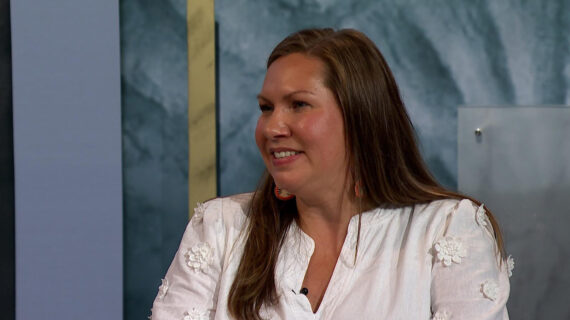

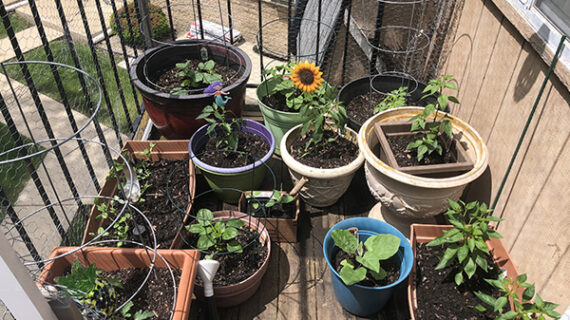
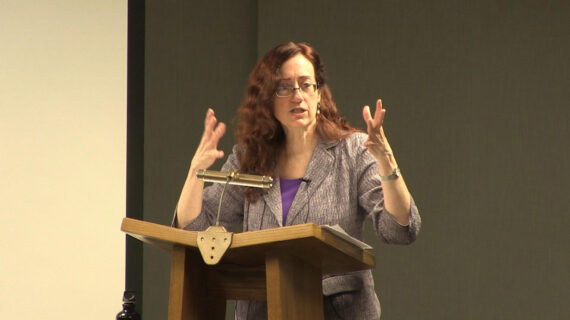
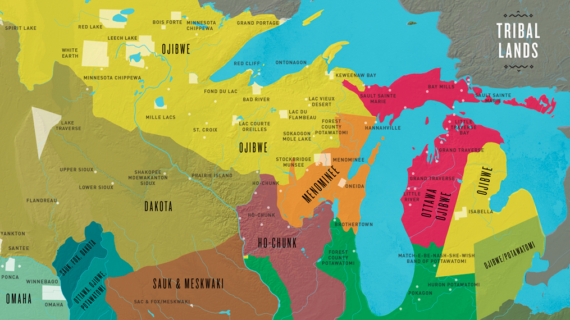


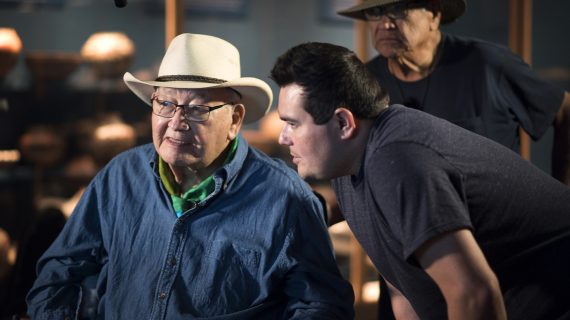



Follow Us